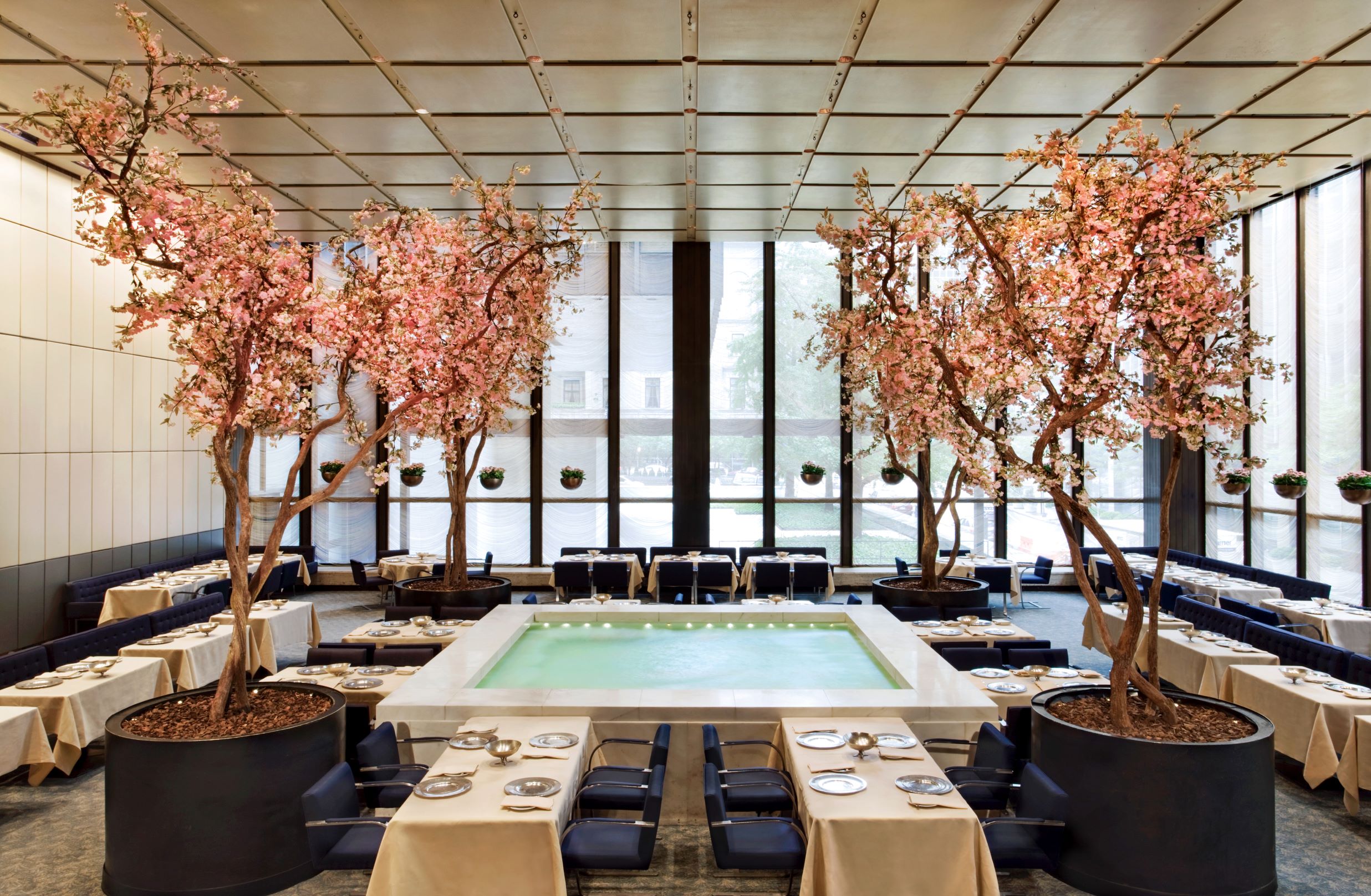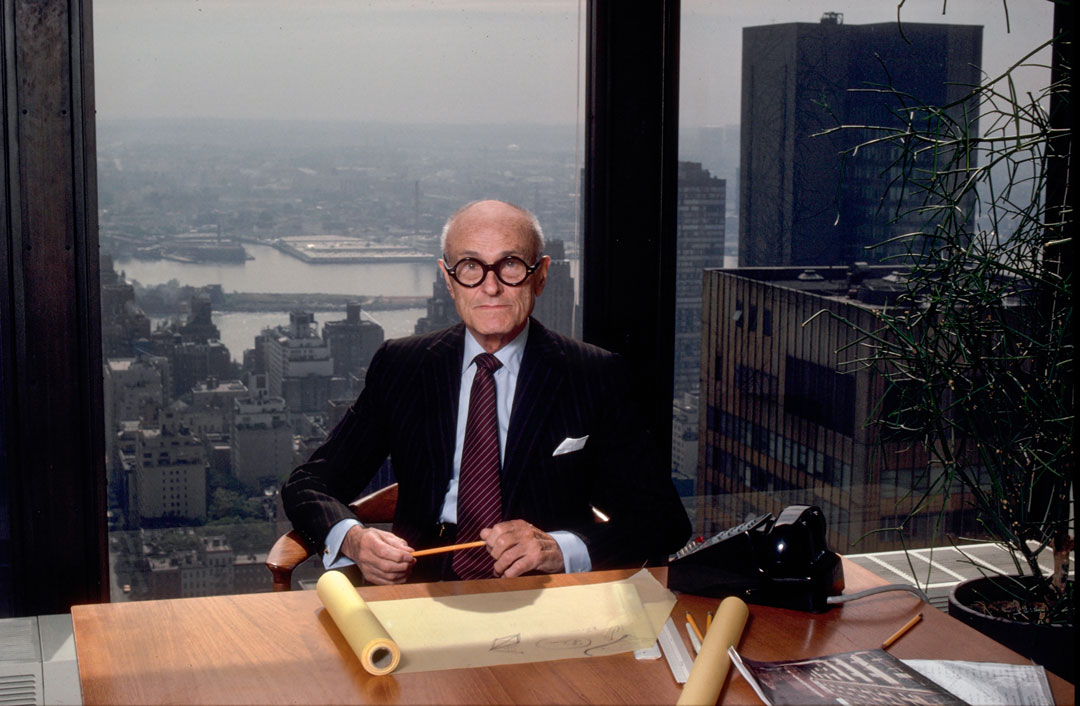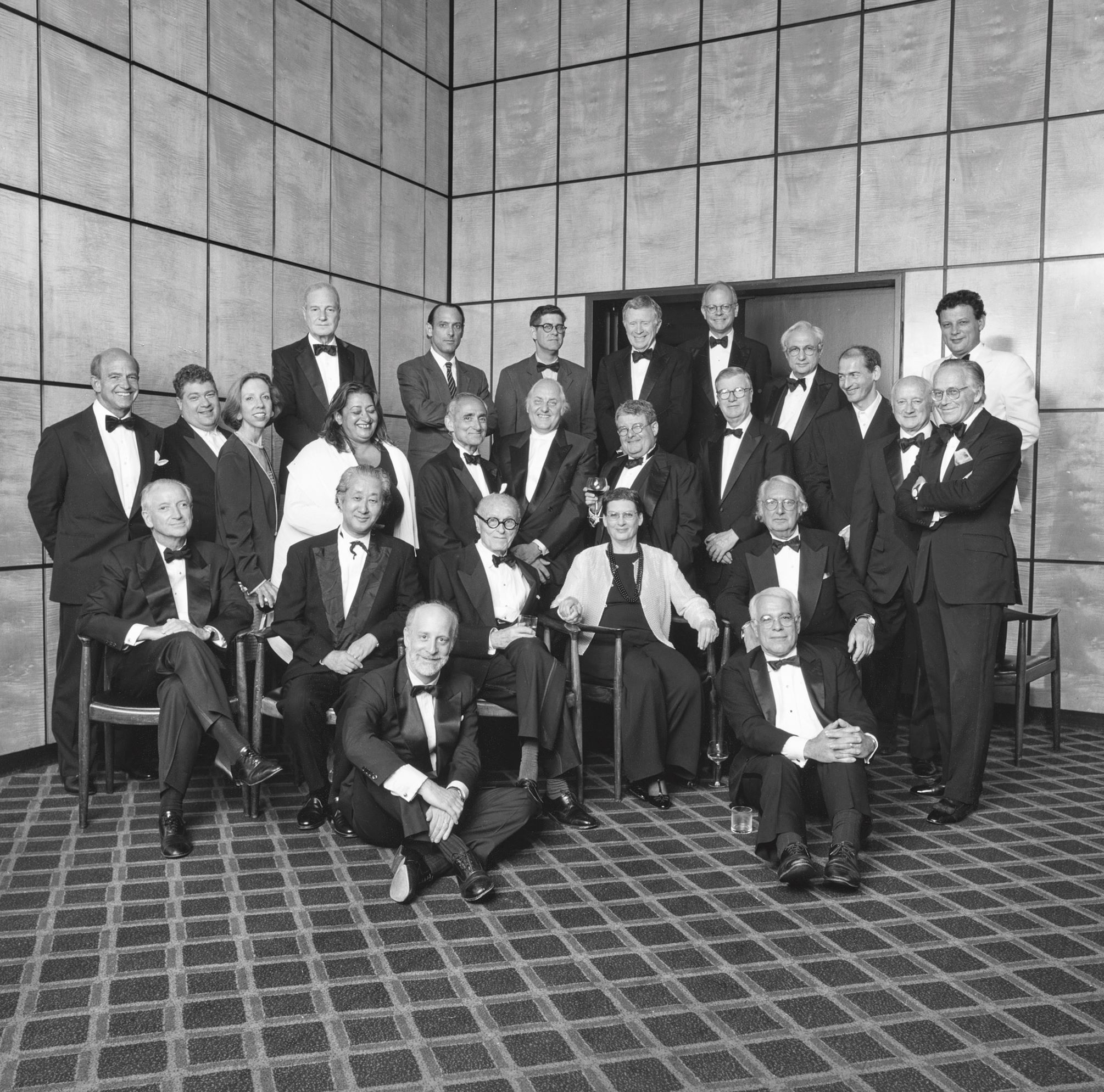
The New York restaurant where Philip Johnson held court
Did Johnson’s gossipy nature, often indulged at the Four Seasons restaurant help improve architecture in America?
Being a gossip isn’t a great entrée into the history books, as author Ian Volner acknowledges in his new book, Philip Johnson: A Visual Biography. “The general perception, during his lifetime and since, is that Philip’s career as a ‘serious’ maker of buildings was undercut by his moonlighting as a tabloid staple,” writes Volner, “a scandal-loving power broker dishing the design-world dirt over lunch at the Four Seasons.”
But we shouldn’t dismiss this aspect of Johnson’s life so quickly. After all, he made the restaurant where he held court, and it was, indisputably, a classic. Though the Seagram Building, the mid-century Manhattan modernist monolith which housed the Four Seasons, is rightly attributed to Mies van der Rohe, Johnson was, as Volner writes, “responsible for portions of the interior detailing, as well as the lowerfloor restaurants,” adding, “Philip helped make the building not just the manifest proof of his favorite architect’s genius, but also a glamor spot for a generation of New Yorkers.”

Johnson’s own social circle added to the glamour, after the architect set up his practice in the building, and ate regularly at the restaurant. “His favored spot for lunches, dinners, and gossipy tête-à-têtes,” writes Volner, “it became as much a headquarters to him as his office upstairs."
Of course today almost everyone acknowledges the Seagram Building’s pivotal place in history. “What architecture critic Herbert Muschamp would call ‘the millennium’s most important building’ was indeed as influential as any constructed in living memory,” writes Volner in our new book. “The City of New York altered its zoning ordinances to encourage other architects to copy Mies’s ample plaza, and soon all of Park Avenue was dotted with similar structures, to say nothing of the countless lookalikes that sprang up all across the country.”

Yet, in among all that skyscraping praise, some acknowledgement should to go Johnson’s luscious interiors, where he managed to glamorise and popularise a much overlooked aspect of contemporary American culture.
“Whether staging exhibitions at MoMA, appearing at a landmarks-preservation gala with Onassis, or just sitting around a table at the Four Seasons with a group of younger architects—telling them perhaps how Blanchette Rockefeller never knew ‘anything about architecture Philip always made architecture seem like something worth paying attention to,” Volner writes. "In a country where the so-called mother of the arts has often been treated more like a neglected stepchild, that is an accomplishment as towering as any of Philip’s lofty skyscrapers.”

For greater insight into the less well-understood aspects of Johnson’s life and work, as well as sharp coverage of his better-known achievements, order a copy of Philip Johnson: A Visual Biography, here.